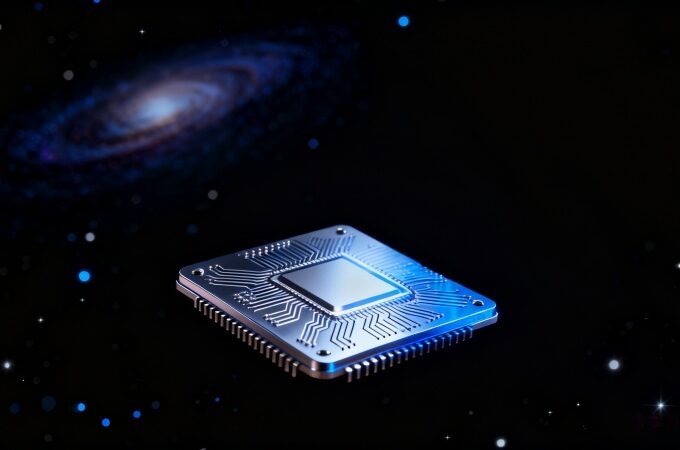With technology advancing at a rapid pace, Brain-Computer Interface (BCI) technology has become one of the key frontiers in the tech industry. Not only can this technology help people who have lost the ability to move their limbs to regain some control, but it also has the potential to change the way we interact with digital devices. Synchron, one of the leaders in this field, is working to develop a technology that controls digital devices with thoughts, a technology that promises to revolutionize the lives of people with disabilities, the elderly, and everyday users. Peter Yoo, head of neuroscience at Synchron, recently explained in detail this groundbreaking technology and its applications.
Company Profile: Synchron’s Mission and Vision
Founded in 2016, Synchron is an innovative company specializing in brain-computer interface technology. The company’s goal is to change the landscape in areas such as healthcare, rehabilitation, and smart device control by developing implantable brain-computer interfaces that enable a more direct connection between the brain and digital devices. Unlike traditional brain-computer interface products, Synchron’s technology takes a non-invasive approach, utilizing modern neuroscience and advanced engineering to provide a new way for users to interact.
Peter Yoo, Synchron’s head of neuroscience, has long been involved in neuroscience and brain-computer interface technology. He said Synchron’s core mission is to help people who have lost their motor skills due to illness or accidents regain control of the world. At the same time, the company hopes to use this technology to improve the efficiency of health care and human-computer interaction, creating a smarter and more convenient future.
Principle: How to Control Devices Through Your Mind
Synchron’s brain-computer interface technology is based on a key principle: the brain controls the body’s movements through electrical signals, which can be interpreted and translated into machine commands by technical means, explains Peter Yoo. Synchron’s core technology is based on the implantation of a device called ‘Stentrode’ in the brain, which enters the brain through blood vessels without the need for craniotomy.
‘Stentrode’ is a miniature device that enters through a catheter from a blood vessel in the brain and is anchored in a specific area of the brain, enabling real-time monitoring and recording of the brain’s electrical activity. By decoding these electrical signals, Synchron’s device can translate them into digital commands that control the operation of external devices. Unlike traditional brain-computer interfaces that require electrodes to be implanted through open-heart surgery, Stentrode’s implantation is less invasive, less risky, and has a shorter recovery time, which makes it a huge advantage in clinical applications.
Peter Yoo further explained that the core of this technology lies in the accurate decoding and real-time transmission of brain signals. Each person’s brain activity has subtle differences, how to ensure that the device can adapt to different brain signals and respond accurately is one of the key challenges of Synchron technology. Through efficient data processing algorithms, Synchron can achieve highly accurate signal decoding, ensuring the stability and practicality of the brain-computer interface.
Applications: Bringing Hope to Patients, Adding Convenience to Life
The most immediate application of Synchron’s brain-computer interface technology is to help patients who have lost motor skills as a result of spinal cord injuries, strokes, or other neurological disorders to regain control of their lives, according to Peter Yoo, who points out that traditional rehabilitation methods are often unable to help them regain the ability to live independently. Instead, through brain-computer interface technology, they can control external devices directly through their thoughts, thereby achieving self-care.
Specifically, Synchron’s technology can help patients control computers, smartphones, wheelchairs, and even smart home systems. For example, with the implanted Stentrode device, patients with spinal cord injuries can communicate, browse the web, and even make video calls by controlling their smartphones through their thoughts. This not only provides patients with greater ease of living but also enhances their social interaction and self-independence.
In addition, Synchron’s brain-computer interface technology can be applied to an even wider range of fields, including virtual reality, augmented reality, and game control. In these applications, users directly control the interaction of the digital world through their thoughts, enhancing the immersion of the virtual experience. Meanwhile, with the further development of technology, ordinary consumers can also experience the convenience of such mind-controlled devices in their daily lives, such as using their minds to operate smart homes, conduct health monitoring, and even interact with others through virtual reality.

Prospects: A Broad Future for Brain-Computer Interface Technology
Peter Yoo is confident about the future of brain-computer interfaces as the technology continues to advance. He believes that in the future, this technology will not only improve the quality of life for patients but may also revolutionize human-computer interaction, making the use of digital devices more natural and efficient.
Firstly, as artificial intelligence, machine learning, and big data analysis technologies continue to mature, the precision and response speed of brain-computer interfaces will be further improved. By optimizing brain signal decoding algorithms and transmission technologies, future brain-computer interfaces will be able to respond more accurately to user intent and provide a smoother operating experience.
Secondly, with the reduction of equipment costs and the popularisation of the technology, the application of brain-computer interface technology will gradually expand from the medical field to the consumer market. People may see brain-computer interface technology become part of daily life shortly, widely used in smart device control, entertainment, education, and even remote work.
However, despite the bright future, Peter Yoo also pointed out that there are some challenges to the popularisation of brain-computer interface technology. For example, privacy and data security will be important issues that must be addressed. As brain-computer interfaces can read more detailed data about brain activity, how to ensure that user’s personal information and thoughts are not misused is a major challenge in the development of the technology.
Conclusion: Making Thoughts a New Kind of Input
Synchron’s brain-computer interface technology is evolving into something smarter and more convenient, which not only provides new treatment options for the medical community but also brings a vision of the future of life for ordinary consumers. Through Peter Yoo’s detailed explanation, we can see how this technology enables more natural and efficient human-computer interaction by reading brain signals and enabling people to control devices directly through their thoughts.
As technology continues to advance, brain-computer interfaces are expected to be widely used in the fields of healthcare, entertainment, and education, changing the way we interact with the digital world. In the future, thoughts will not only be a tool for us to think but also a new way to control the digital world, opening up a whole new era of digital life.












